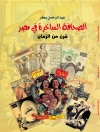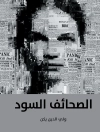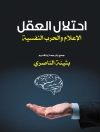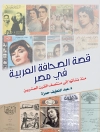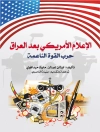Das Internet mit seinen Potenzialen an digitaler Vernetzung, Publikationsmöglichkeiten und Kommunikationsformen verändert die Forschung und ihre Ergebnisse nachhaltig. Wissenschaftler und Wissenschaftlerinnen twittern und bloggen, arbeiten in spezialisierten digitalen Netzwerken zusammen und nutzen Wikipedia. Zugleich dringen große Internetakteure wie etwa Google immer mehr in den akademischen Sektor ein. Das Buch analysiert die aktuellen technisch-sozialen Entwicklungen im Internet sowie ihre Auswirkungen auf die Arbeit von Wissenschaftlern.
قائمة المحتويات
Contents
Preface IX
1 Introduction1
1.1 Cyberscience 1.0 Revisited2
1.2 Web 2.0 and Cyberscience5
1.2.1 The Internet is becoming a social space5
1.2.2 Social media, digital social networks and digital social culture7
1.2.3 On the path to cyberscience 2.0?9
1.3 Conceptual Framework and Methods11
1.3.1 Modeling scholarly activities and ICT impact on academia11
1.3.2 Methods applied15
2 Case Studies17
2.1 Social Network Sites19
2.1.1 Main functions26
2.1.2 Potential for science and research33
2.1.3 Usage practices and impact35
2.1.4 Interim conclusions48
2.2 Microblogging50
2.2.1 Main functions51
2.2.2 Potentials for academia54
2.2.3 Usage practices and impact57
2.2.4 Interim conclusions70
2.3 Collaborative Knowledge Production-The Case of Wikimedia72
2.3.1 Main functions and core principles74
2.3.2 Potentials for academia82
2.3.3 Usage practices and impact85
2.3.4 Interim conclusions97
2.4 Virtual Worlds-The Case of Second Life100
2.4.1 Main functions101
2.4.2 Potentials for science and research103
2.4.3 Usage practices and impact104
2.4.4 Interim conclusions112
2.5 Search Engines-The Case of Google113
2.5.1 Main functions116
2.5.2 Potential for academia125
2.5.3 User practices and impact127
2.5.4 Interim conclusions139
3 Cross-Cutting Analysis143
3.1 Interactivity as a Crucial Category143
3.1.1 Utopian and dystopian perspectives143
3.1.2 Insiders and outsiders: methodological issues146
3.1.3 Overcoming the barriers between utopians and dystopians149
3.2 New Windows in the Ivory Tower151
3.2.1 Bringing together the academic and the public sphere152
3.2.2 Blurring media formats155
3.2.3 Blurring roles158
3.2.4 Bridging the boundaries?161
3.3 Academic Quality and Digital Social Networks163
3.3.1 Recent developments in academic quality control163
3.3.2 Ex ante quality control for or through digital social networks?165
3.3.3 Ex post quality control in digital social networks168
3.3.4 Crediting and incentives171
3.4 Information Overload or Information Paradise?172
3.4.1 The evolution and diversification of communication channels in academia173
3.4.2 Quantitative impacts of multi-channel communication176
3.4.3 Qualitative impacts?178
3.5 Between Transparency and Privacy181
3.5.1 Privacy versus transparency in the Web 2.0182
3.5.2 Privacy impact assessment of academic use of social media183
3.5.3 Paths towards transparent and privacy-friendly academic Web 2.0?185
3.6 Towards Democratization of Science?188
3.6.1 What does democratization mean?188
3.6.2 Internal democratization?190
3.6.3 External democratization?194
3.6.4 Obstacles for assessing democratization processes197
4 Overall Conclusions and Outlook199
4.1 Maturing Cyberscience199
4.2 The Cyberscience 2.0 Prospects201
4.3 An Ambivalent Overall Assessment205
Abbreviations207
List of Tables209
List of Figures210
Bibliography211
Index233
عن المؤلف
PD Dr. Michael Nentwich ist Direktor des Instituts für Technikfolgen-Abschätzung (ITA) der Österreichischen Akademie der Wissenschaften in Wien. René König, Dipl.- Soz., arbeitete dort im Projekt ‘Interactive Science’.


